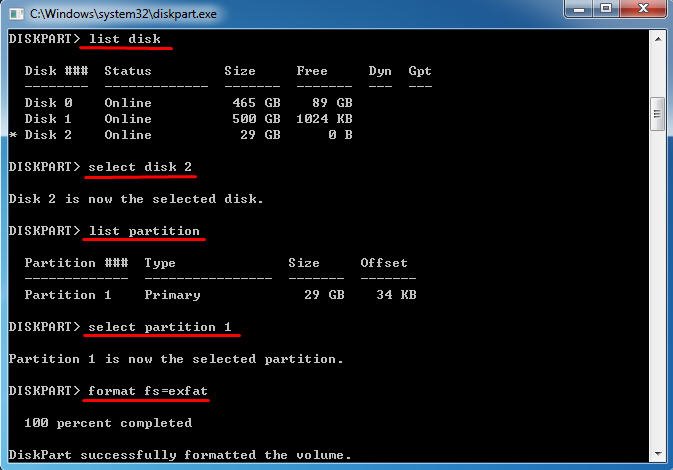
Go to This PC, under “Devices and drives,” highlight the disk that represents your USB flash drive, right-click and select Properties. That means my Lexar disk is currently with the FAT32 file system. In the new dialogue, pay attention to General > Format, where it says “MS-DOS (FAT32)”. Once the Lexar disk shows up on the desktop, right-click on the drive icon and select “Get Info.”Īlternatively (in case the disk does not show up on your desktop), open Finder on the sidebar menu, locate your USB drive under Devices, right-click and select “Get Info.” I’m here to use a 32GB Lexar USB key as an example. Make sure your device can be detected and recognized. Read on for step-by-step instructions… How To Check A USB Drive’s File System?įirst, plug your flash drive into the USB port on your computer.

How to know what current file system your flash drive is with, and how to format it to exFAT? Now that you’ve learned, exFAT is the ideal file system. This is because an NTFS-based drive can be read by macOS, but you can’t write data for the purpose. You may notice that NTFS is marked “Partially” under the Compatible with macOS column. You should format your storage drive with exFAT instead of FAT32, assuming that all devices you want to use the drive support exFAT. Therefore, it’s perfect for a USB flash drive or external disk, especially when you need to save files more than 4GB in size. How to Format a Drive for Mac & PC CompatibilityĪs you can see, exFAT is the only file system that works with all versions of Windows and macOS and does not have any max file size or partition-size limits.


Note that another file system called FAT32 does the same thing but with one major flaw. In other words, you can access the industry and transfer data without any hassles. If your disk were initially formatted to NTFS on a PC (or HFS+ on a Mac), most likely, you’d suffer limitations for example, the data on your drive can’t be read or written on one of your computers.įortunately, there is a file system (actually two, I’ll explain) that you can format your flash drive to be fully compatible with Mac and PC. If you have a USB drive and plan to use it on a Mac and a PC, things can get tricky here. By default, Macs are with HFS+ (since 2017, there’s a new Apple File System, APFS, optimized for flash storage), while PCs are with NTFS. 1.7 Author’s Opinion regarding the Format Flash Drive For MAC And PC Guide: Formatting A USB Flash Drive For Mac & PC Compatibility 2023įormat Flash Drive For MAC And PC: It’s no surprise that PCs and Macs do not work well with each other due to differences between the two operating systems (Windows vs.


 0 kommentar(er)
0 kommentar(er)
